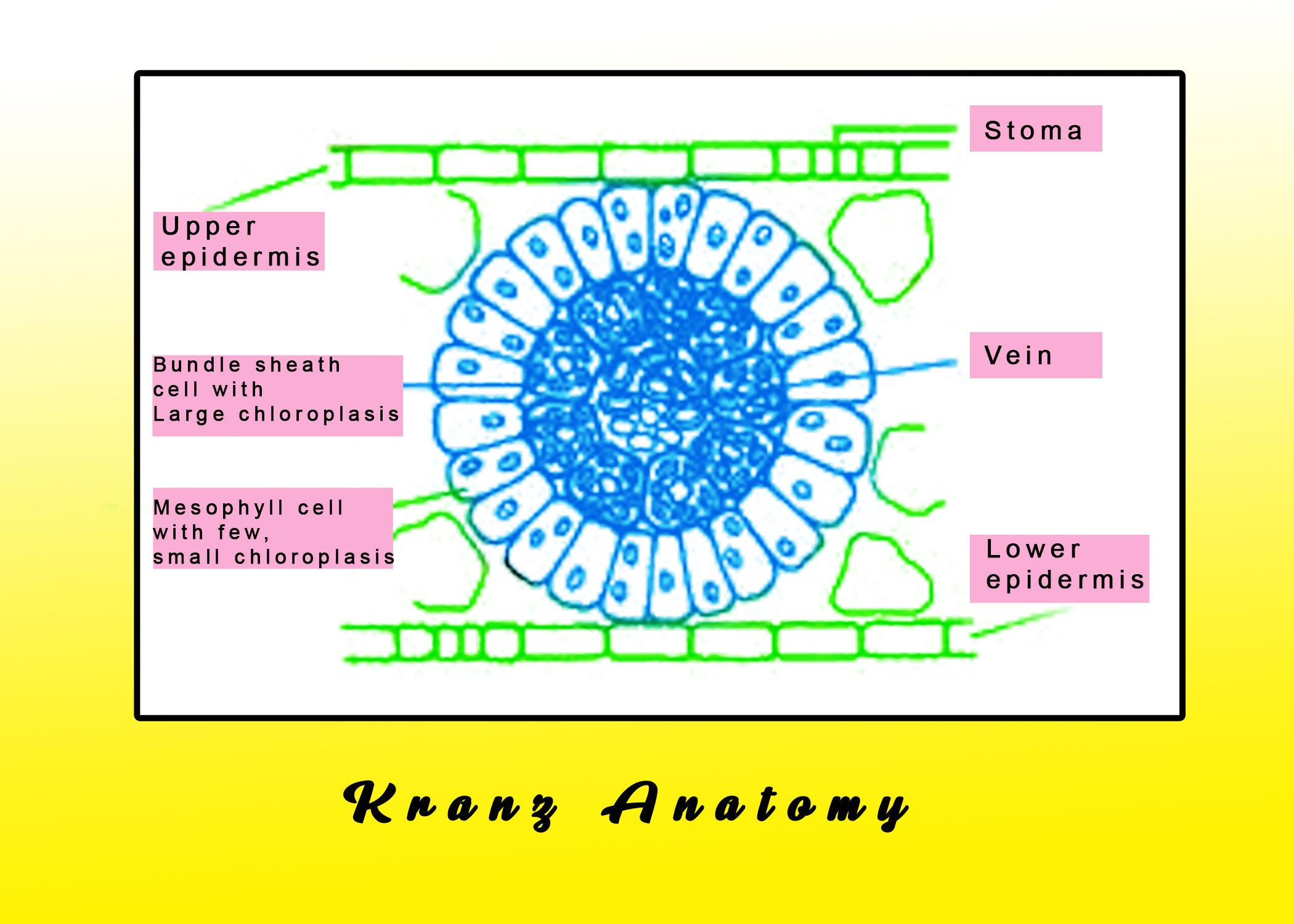
In Kranz anatomy, the bundle sheath cells have-
(a)Thin walls, many intercellular spaces, and no chloroplast
(b)Thick walls, no intercellular spaces, and a large number of chloroplast
(c)Thin walls, no intercellular spaces, and several chloroplasts
(d)Thick walls, many intercellular spaces, and few chloroplasts
Answer
492.6k+ views
Hint: Kranz means wreath (ring) and is a representation of the cells' arrangement. These cells are distinguished by a large number of agranal chloroplasts, thick walls, and no spaces that are impervious to gaseous exchange.
Complete answer:
In the chloroplast of
Kranz anatomy is a specialized structure in
Additional Information: In the
Atmospheric oxygen is first fixed in the mesophyll cells to form the 4-carbon compound oxaloacetate, catalyzed by PEP carboxylase.
Oxaloacetate is converted into malate that is carried to the cells of the bundle-sheath.
In the bundle-sheath cells, malate dissociates to free carbon dioxide.
Carbon dioxide is fixed by Rubisco and converted into sugars.
So, the correct answer is ‘Thick walls, many intercellular spaces, and few chloroplasts’.
Note: In three separate steps, the Kranz anatomy is developed:
-Procambium initiation
-Bundle sheath and the specification of mesophyll cells.
-Creation of Chloroplast and integration of the

Complete answer:
In the chloroplast of
Kranz anatomy is a specialized structure in
Additional Information: In the
Atmospheric oxygen is first fixed in the mesophyll cells to form the 4-carbon compound oxaloacetate, catalyzed by PEP carboxylase.
Oxaloacetate is converted into malate that is carried to the cells of the bundle-sheath.
In the bundle-sheath cells, malate dissociates to free carbon dioxide.
Carbon dioxide is fixed by Rubisco and converted into sugars.
So, the correct answer is ‘Thick walls, many intercellular spaces, and few chloroplasts’.
Note: In three separate steps, the Kranz anatomy is developed:
-Procambium initiation
-Bundle sheath and the specification of mesophyll cells.
-Creation of Chloroplast and integration of the

Recently Updated Pages
Master Class 11 Economics: Engaging Questions & Answers for Success

Master Class 11 Business Studies: Engaging Questions & Answers for Success

Master Class 11 Accountancy: Engaging Questions & Answers for Success

Master Class 11 English: Engaging Questions & Answers for Success

Master Class 11 Computer Science: Engaging Questions & Answers for Success

Master Class 11 Maths: Engaging Questions & Answers for Success

Trending doubts
Which one is a true fish A Jellyfish B Starfish C Dogfish class 11 biology CBSE

State and prove Bernoullis theorem class 11 physics CBSE

1 ton equals to A 100 kg B 1000 kg C 10 kg D 10000 class 11 physics CBSE

In which part of the body the blood is purified oxygenation class 11 biology CBSE

One Metric ton is equal to kg A 10000 B 1000 C 100 class 11 physics CBSE

Difference Between Prokaryotic Cells and Eukaryotic Cells




